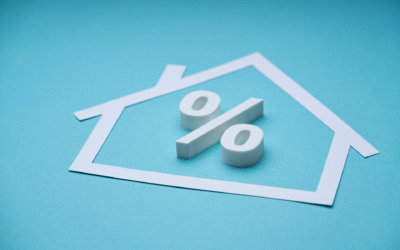Remortgaging to stay on competitive rates and avoid standard variable rates has always been a priority. However, in recent years this has been particularly important as rates have increased and experienced volatility.
Understanding the optimal timing and preparation for remortgaging is crucial to ensure you secure the best deal and maintain financial stability.
When Should You Start Thinking About Remortgaging?
Arguably, it’s never too early to start thinking about the impact of remortgaging if you feel that your monthly expenses will be impacted as a result.
You may not do anything (either because you can’t or it’s not a good idea), but this proactive approach will mean that you can plan well in advance.
For instance, if there’s an anticipation of rising interest rates, you can start saving additional funds and/or making overpayments on your mortgage which will allow you to adjust your household finances way in advance.
Overpaying not only reduces your outstanding balance but also helps you adapt to higher payment requirements, easing the transition when rates increase.
How Early Can You Remortgage?
Technically, you can remortgage at any time. However, it’s essential to consider any early repayment charges (ERCs) associated with your current mortgage.
These charges can be substantial and may outweigh the benefits of securing a new deal.
Therefore, while remortgaging early is possible, it should only be done after a thorough financial analysis to ensure it’s advantageous.
In most cases, if you currently have a competitive rate compared to the market and/or you have early repayment charges, it’s usually best to wait until your current deal expires.
However, there’s no harm in double checking.
So when should you start the remortgage process?
In reality, it’s usually good to start the process around as early as six months in advance of your existing product expiring.
Aside from planning well in advance, the reason for this timeframe is that the longest a mortgage offer is usually valid for with some lenders is six months. So if you start the process too much earlier than this, the offer may expire before the time you need it so it would be a waste of time.
This is why it’s important to check how long the offers for your preferred lender are valid for. If they are 3 or 4 months, then the process should be delayed in line with this timeframe.
To confirm, just because you start the process this early, you won’t actually complete the process this early. Hence, you won’t pay any early repayment charges and/or lose a lower interest rate that you might currently be paying.
Is It Worth Remortgaging Early?
The decision to remortgage early depends on several factors:
- Early Repayment Charges: Review your mortgage agreement to identify any ERCs. These fees can impact the overall savings from remortgaging.
- Market Conditions: If interest rates are projected to rise, securing a new deal at current rates might be beneficial. Conversely, if rates are falling, waiting could be advantageous.
- Processing Time: Remortgaging can take between six to twelve weeks on average. Starting the process early ensures that your new mortgage is in place immediately after your current deal ends, preventing a lapse into a potentially higher standard variable rate (SVR) while still avoiding costly ERCs.
What’s the latest you should leave remortgaging?
In our experience and generally speaking, three months is advisable, two months is doable, but could be pushing it and one month is probably too short.
The actual timeframe will depend on factors such as the lender and the solicitor. However, the later you leave it, the less time you allow for delays or any obstacles that may occur.
If you miss a deadline, in most cases you will drop onto the current lender’s standard variable rate for a time which could increase your payments. If this is likely to happen, you need to make sure that you can cover the higher payments until your remortgage goes through.
Preparing for Remortgaging
To position yourself favorably for remortgaging:
- Financial Assessment: Evaluate your current financial situation, including income, expenses, and any existing debts. Understanding your financial health is crucial for determining affordability.
- Credit Score Maintenance: A strong credit score enhances your eligibility for competitive mortgage rates. Avoid taking on new debt and ensure timely payments on existing obligations.
- Documentation: Gather necessary documents such as proof of income, bank statements, and details of your current mortgage. Having these ready can expedite the remortgaging process.
Options for Remortgaging
When considering remortgaging, you have two primary options:
- Product Transfer: This involves switching to a new mortgage deal with your existing lender. The process is typically straightforward, often requiring less paperwork and no physical property valuation. However, it’s essential to compare the offered rates with those available in the broader market.
- Remortgaging with a New Lender: This option may offer more competitive rates but involves a more extensive application process, including property valuation and legal work. It’s crucial to weigh the potential savings against the associated costs and efforts.
Summary
Proactive planning is key to a successful remortgage. Begin monitoring interest rates and evaluating your financial situation well in advance
Starting the remortgaging process around six months before your deal expires can help secure favorable terms and ensure a seamless transition. Always consider potential early repayment charges and consult with an adviser to explore the best options tailored to your circumstances.
By staying informed and prepared, you can navigate the remortgaging process effectively, potentially saving money and aligning your mortgage with your financial goals.




